Artist Cai Guo-Qiang transformed the midday sky on June 26 last week into a rhapsodic canvas with Japan’s first daytime fireworks display. Bold, impressive and humble, When the sky blooms with Sakura was more a matter of rapture than bombast. It was also a temporary memorial made of fire – the area was devastated by the 2011 tsunami.
Only Guo-Qiang could skillfully wield explosives with such sense and grace. The 65-year-old Chinese artist has made a career out of turning destruction into beauty.
The midday pyrotechnics was a grand preamble and salvo to the opening of his solo show”Ramble in the Cosmos – From the Primal Fireball” at the National Art Center Tokyo (which runs until August 21). The exhibition looks back on projects from 1985 to today and is akin to a return to his roots – Cai spent nine years in Japan before emigrating to New York. Saint Laurent co-presents the exhibition and orders the fireworks.
“Cai’s work reflects the fluidity of contemporary culture while honoring a variety of historic artistic and spiritual traditions,” says Saint Laurent Creative Director Anthony Vaccarello, “encouraging viewers to reflect on who they are and why they are here. “.
We caught up with Cai and asked the artist how to accentuate sunny skies, his new show, and life in general.
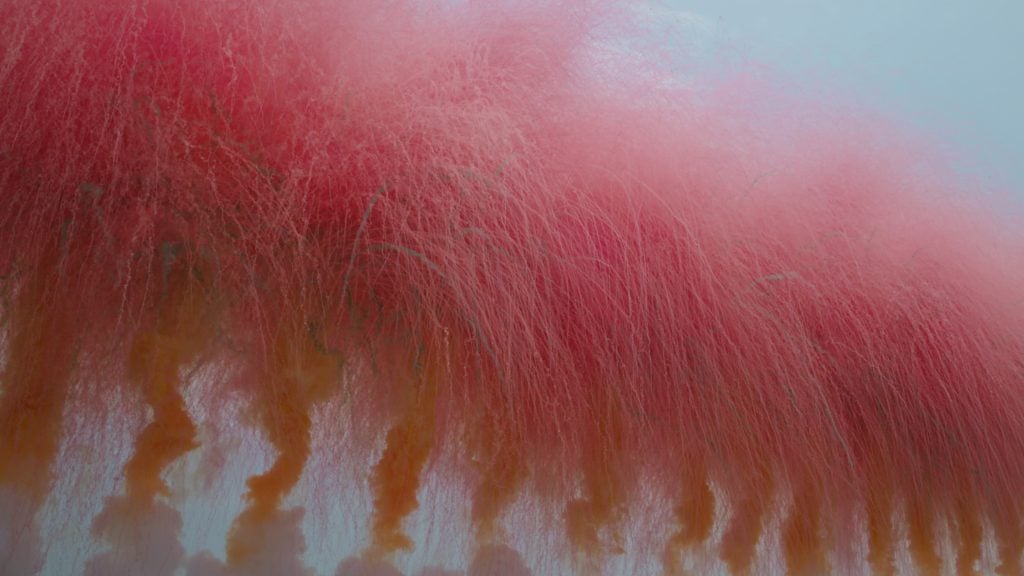
Cai Guo Qiang, When the sky blooms with Sakura, commissioned by Anthony Vaccarello for Saint Laurent.
This interview has been edited and condensed for space.
Fireworks are specific to cultures, such as in China and the United States, two countries with which you have strong ties. They are also universal. Whatever nationalistic orientation they are accustomed to, they are counterbalanced by the sheer aesthetic joy they often generate. Do you ever think about their political use or is there a complete erasure of it?
At first, I felt nervous, anxious, excited and curious about the explosive energy the gunpowder brings, which was important to me. People often assume that I like fireworks, but what I like is the explosion! The purity and abstraction of energy, as well as the unexpected and uncontrollable chaos at that time.
Art is like a space-time tunnel. This allows me to travel between pure art and social reality.
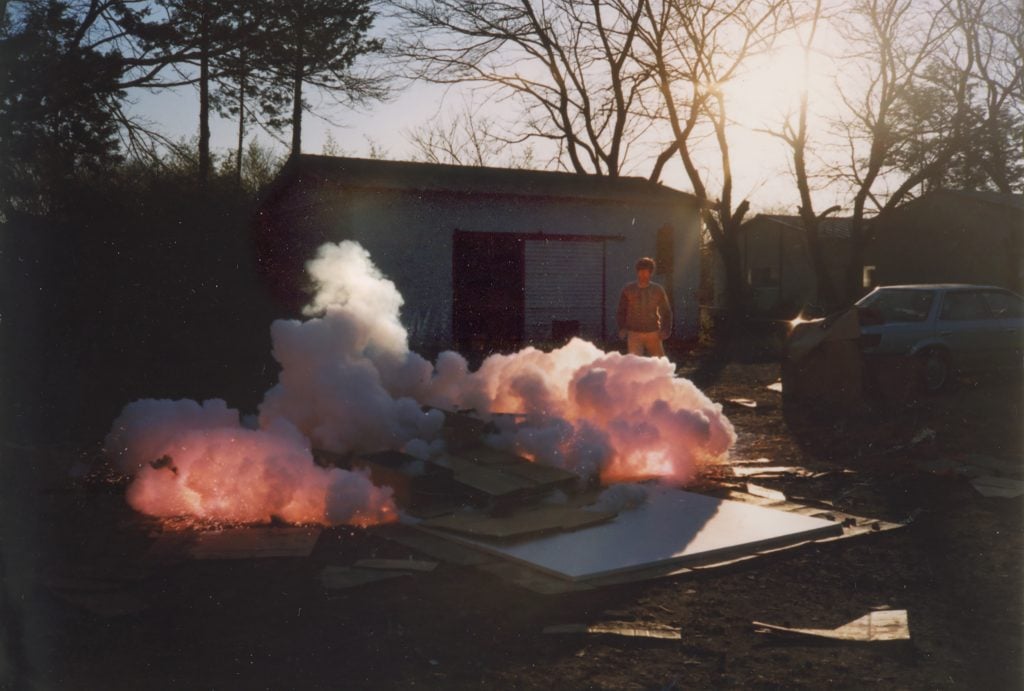
Cai Guo-Qiang during the creation of Fetus Movement II: Extraterrestrial Project #9 (1991). Photo courtesy of Cai Studio.
Fireworks are an ancient Chinese medium. Is their origin and history a factor in your use of these tools?
In my hometown, whenever there is a festival, a wedding or the birth of a baby, firecrackers are lit. Growing up, I could also hear the sound of guns firing across the Taiwan Strait.
My first four years in Japan were the hardest and most rewarding of my life. I began to base my reflection and my creation on the notion of “humanity in the cosmos and cosmic nature in humans”. My goal was to transcend the limitations of matter and spacetime and seek the truth of an eternal bond between humans and the universe. I also gradually moved from a “borrowing from primordial time” and a “borrowing from nature” to a cosmology based on the relationship between man and nature, including a more holistic vision integrating the man, art and nature.
I have come to recognize that the essence of gunpowder is the same as the energy and spirit that human beings possessed from the beginning of their evolution, as well as the essence of the primordial universe. When works of art are created based on this, gunpowder explosions become more than just a means.
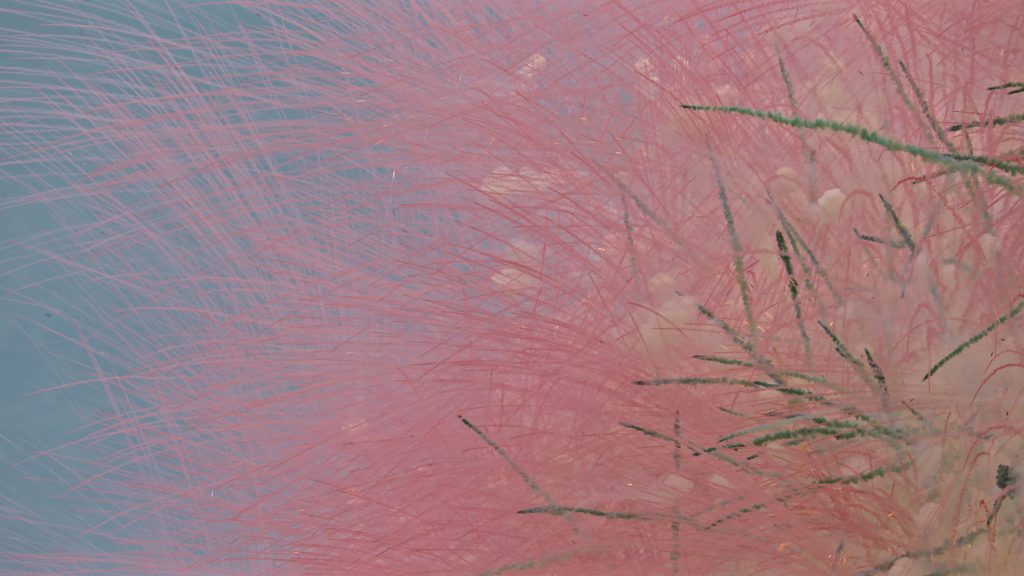
Cai Guo Qiang, When the sky blooms with Sakura, commissioned by Anthony Vaccarello for Saint Laurent.
You’ve been using gunpowder as a tool for a long time. Does it speak to you in a deeper or different way than when you were younger?
When I started using gunpowder to make works, I put the canvas in the big hall of my house, or in the garden, and let it burn freely. Often he burned holes through the canvas. But when my grandmother saw the burning fire, she took the linen cloth outside the hall door and put it on the burning fire, thus extinguishing the fire with a “puff”. It was my grandmother who let me know that if lighting the fire is important, putting out the fire is even more so.
Gunpowder’s charisma lies in its uncontrollability and spontaneity. The work of the artist is to struggle between totalitarian control and total freedom, as well as the desire to relinquish control.
Not only is it a dialogue with gunpowder, but also with the natural environment, energy, the invisible world, societal regulations, politics and the uncertainties brought by new technologies. Perhaps gunpowder is the “lover” I will never tire of in my entire life.
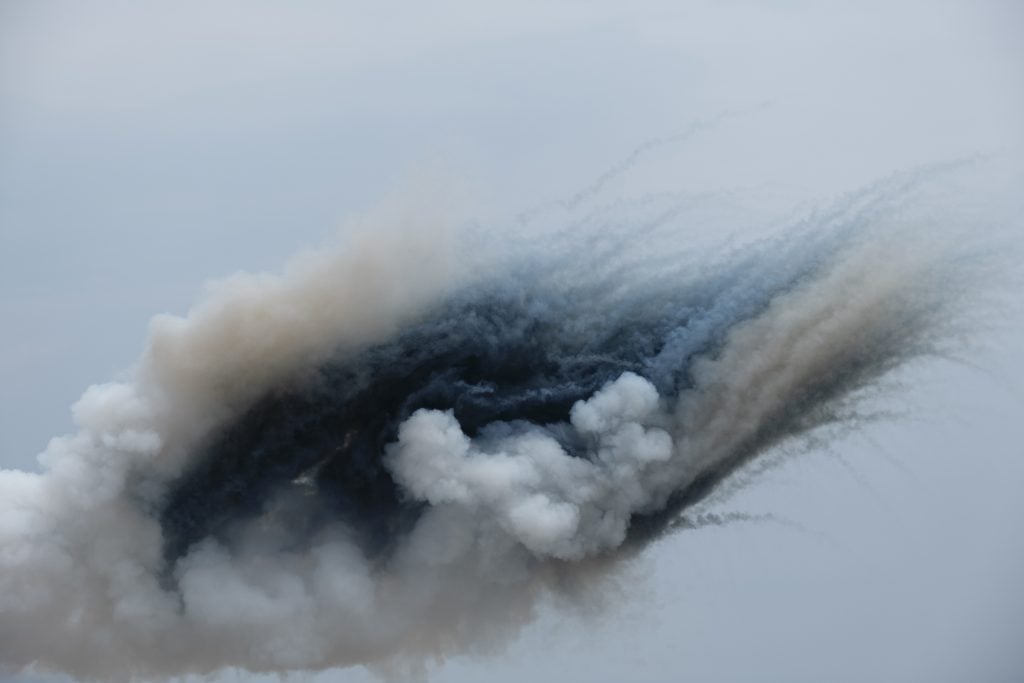
Cai Guo Qiang, When the sky blooms with Sakura, commissioned by Anthony Vaccarello for Saint Laurent.
What was the experience of looking back to assemble past works for this exhibition? Was it emotional?
During the 1980s and 1990s, I contemplated with passion the human and global issues of the 20e century, such as materialism, moral decline, environmental destruction and the future of the cosmos. I thought about these questions as if I were an alien. Reality has often seemed constraining to me, but the stars in the sky have always been like beacons guiding my “walk through the cosmos”.
I’m also surprised to find no record of my thoughts on the process of moving from Japan to the United States. I could only tell from the sketches of various projects that I was already in New York. I had left the place where I had put down my roots and made a foray into a world that was then unknown to me, but from a cosmic point of view, did it seem to have simply moved into the same town?
I can also see how I have become less and less metaphysical over time, redirecting my attention to sociopolitical realities. The problems of the Western world have become my own problems. Looking back, I understand that while I was in Japan, the problems of the Eastern world were more or less my problems too.
The essence, energy and spirit of the depths of oriental culture -[such as] “the only doctrine is the lack of doctrine”, “to be free and at ease, to be natural and of oneself” – continue to guide my imagination as it soars into the heavens to plant seeds that bloom in different cultures around the world.
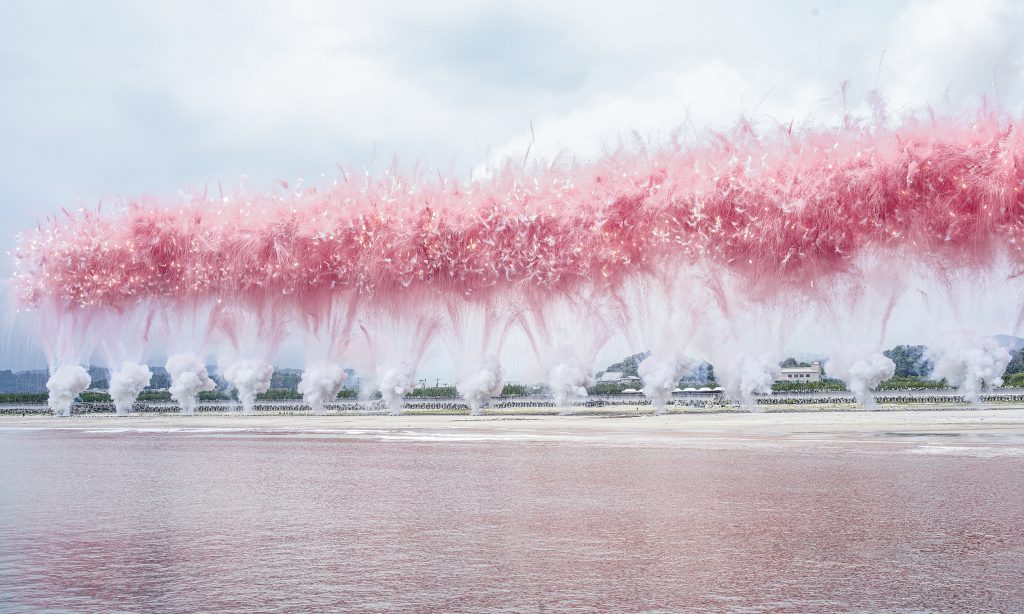
Cai Guo Qiang, When the sky blooms with Sakura, commissioned by Anthony Vaccarello for Saint Laurent.
Another aspect of organizing this exhibition when I return to Japan is to express my gratitude. My early years in Japan were both extraordinarily difficult and immensely rewarding. Although various challenges were also present in my life afterwards, my life can generally be described by this frequently used Chinese saying: Like a spring emerging from the mountains of my hometown, this steady trickle never dried up because there were so many people, in a company relay, who accompanied, propelled and guided me towards the distant horizons of the celestial oceans.
I often feel like a beloved child of God. I grew up under the support of the whole world, while so many hard working artists still end up in poverty. But where is God? They are important people and opportunities that have helped me and shaped who I am. Countless people and stories, known and unknown to me, have nurtured my young self from my hometown in Japan, from then to now. Through the great journey of Walk in the Cosmos exhibition at NACT, I remembered all the people who gave me strength throughout this journey. My heart is filled with gratitude for visible and invisible forces.
Primal Fireball is the explosion of the convergence of these energies.
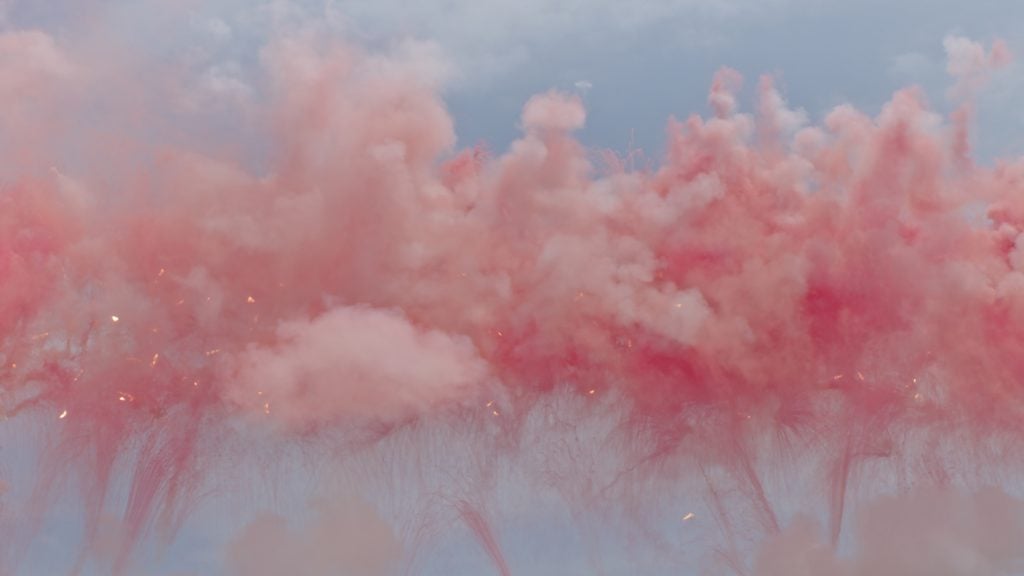
Cai Guo Qiang, When the sky blooms with Sakura, commissioned by Anthony Vaccarello for Saint Laurent.
Why did you want the fireworks to be daytime? How did you develop this as management and why?
Nighttime fireworks rely on light for their effects; their bright shards will return to the darkness. Daytime fireworks rely on smoke to form; although there is also a poetic aim, they are superimposed on social realities and nature. Both types of fireworks carry a different aesthetic. Now it seems to me that daytime fireworks are closer to paintings, but they are also subject to a greater influence of nature.
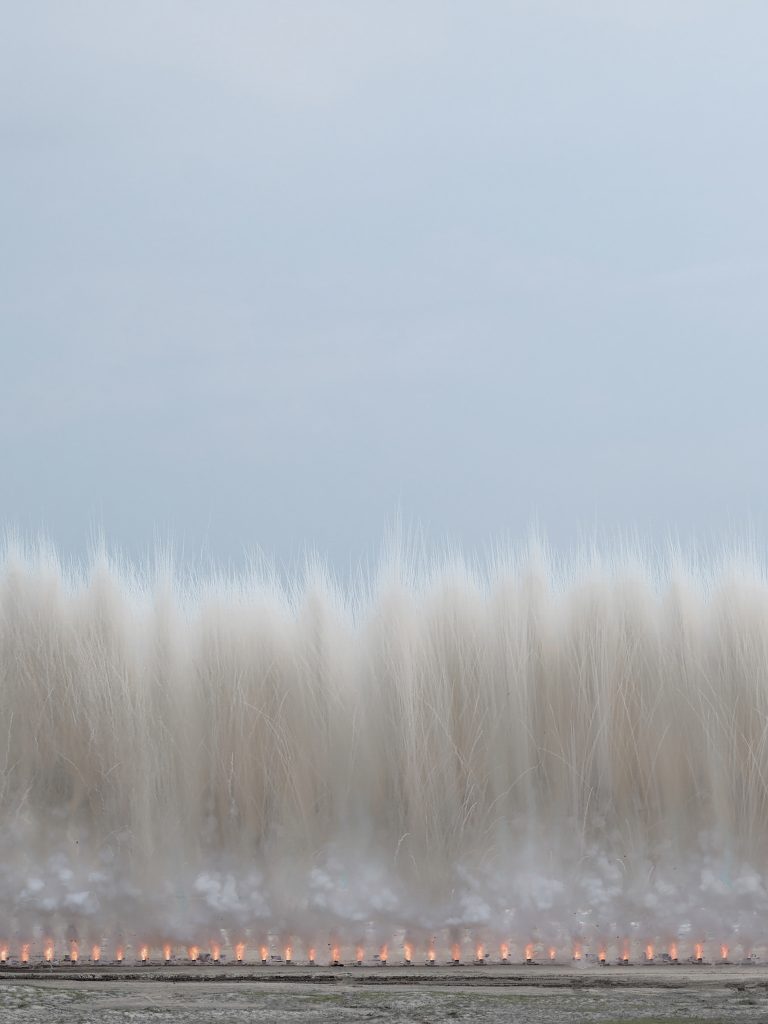
Cai Guo Qiang, When the sky blooms with Sakura, commissioned by Anthony Vaccarello for Saint Laurent.
This land suffered greatly from the earthquake, tsunami and nuclear disaster in 2011. I remember my friends from Iwaki then told me that they wanted to plant Cherry tree [translated: cherry blossoms] on the hills of their hometown. They said, “These Cherry tree represent remorse, as our generation built nuclear power plants, leaving a deep disaster for future generations.
The approximately 40,000 fireworks served as a requiem for lost lives and a mourning for the damage inflicted on nature by mankind. It will be both a commemoration of human connection and a respect for the natural world.
More trending stories:
Barbie’s hot pink Malibu dream home with ocean views and skating rink is available to rent on Airbnb
Follow Artnet News on Facebook:
Want to stay one step ahead of the art world? Subscribe to our newsletter to receive breaking news, revealing interviews and incisive reviews that move the conversation forward.
